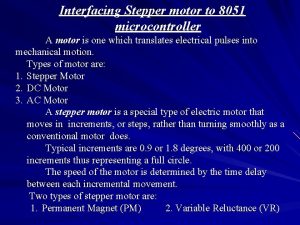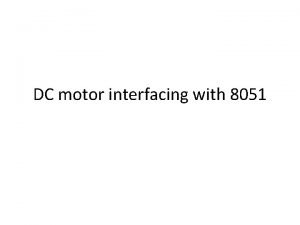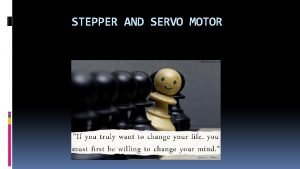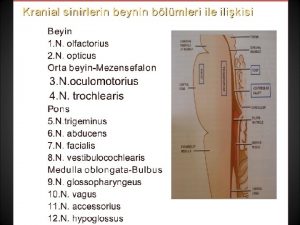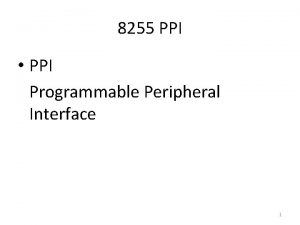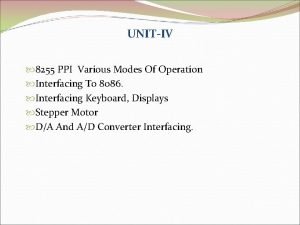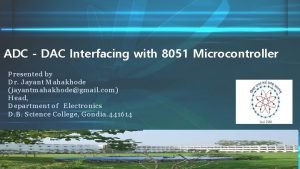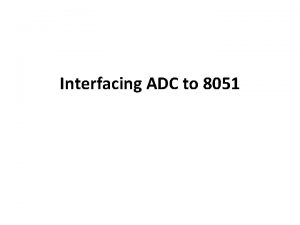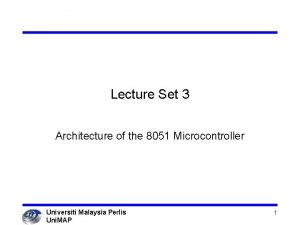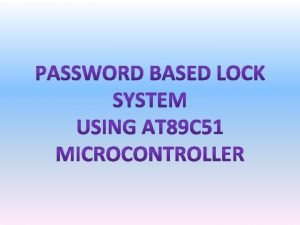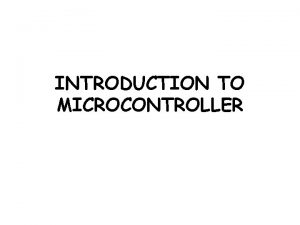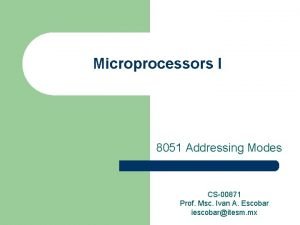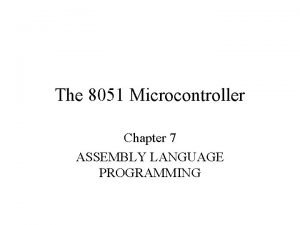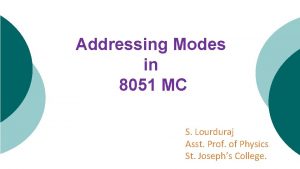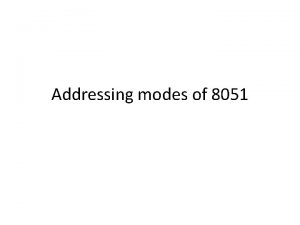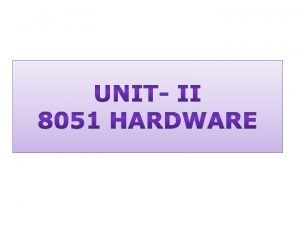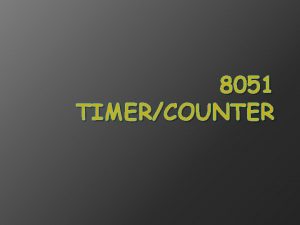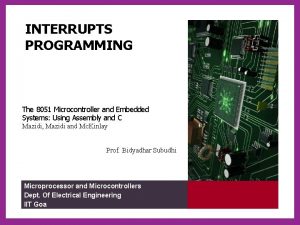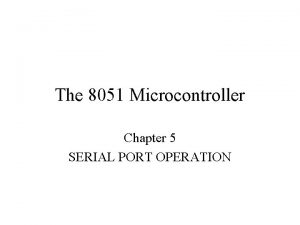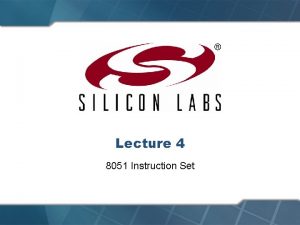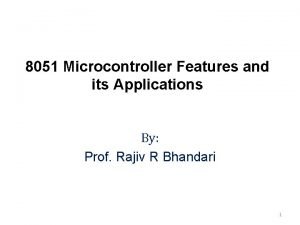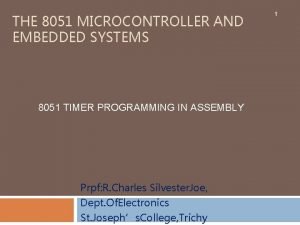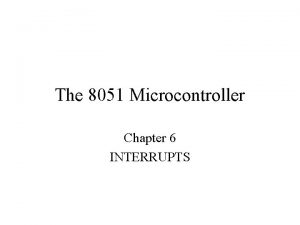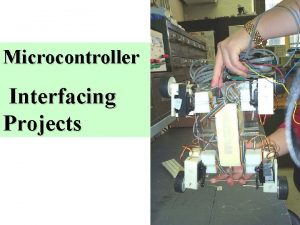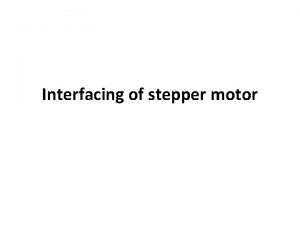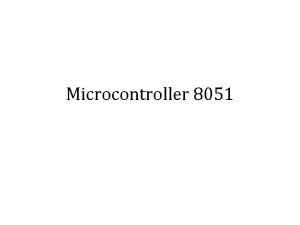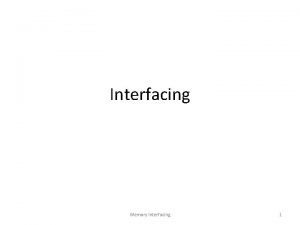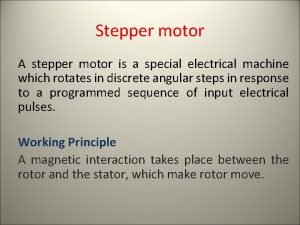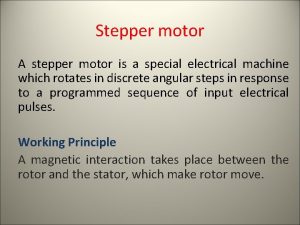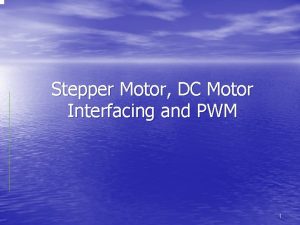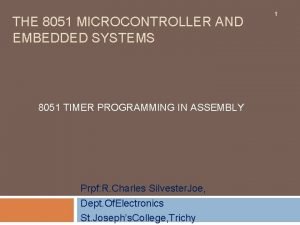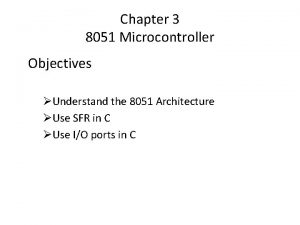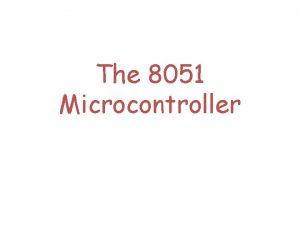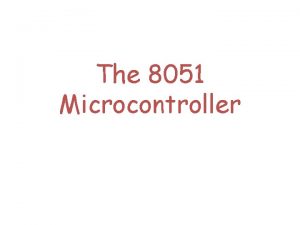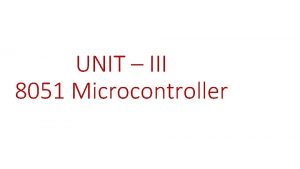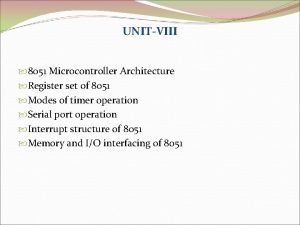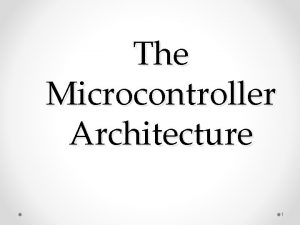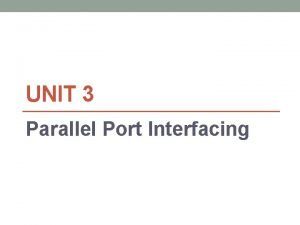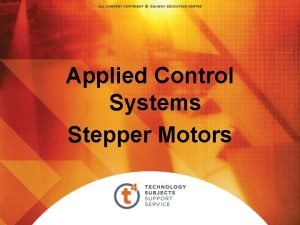Interfacing Stepper motor to 8051 microcontroller A stepper























- Slides: 23

Interfacing Stepper motor to 8051 microcontroller A stepper motor is a special type of electric motor that moves in increments, or steps, rather than turning smoothly as a conventional motor does. Typical increments are 0. 9 or 1. 8 degrees, with 400 or 200 increments thus representing a full circle. The speed of the motor is determined by the time delay between each incremental movement. Stepper motor uses Permanent Magnet (PM) and Variable Reluctance (VR)

Motor Moves Each Time a Pulse is Received Can Control Movement (Direction and Amount) Easily Can Force Motor to Hold Position Against an Opposing Force

Construction Permanent Magnet Rotor – Also Called the Shaft Stator – Surrounds the Shaft – Usually Four Stator Windings Paired with Center-Tapped Common Known as Four-Phase or Unipolar Stepper Motor

Stepper motors can be used in various areas of your microcontroller projects such as making robots, robotic arm, automatic door lock system Types of Stepper motor: 1. Unipolar stepper motor – 6 wires= 4 coils and 2 common 2. Bipolar stepper motor – 4 wires= 4 coils and no common terminals.

Working of Stepper Motor Full Stepping Half Stepping When only 1 coil is energized When 2 coil is energized

Stepper motors can be driven in two different patterns or sequences. namely, 1. Full Step Sequence 2. Half Step Sequence we will go through these sequences one by one.

8051_Mazidistepper motorfig3_full-step. gif

8051_Mazidistepper motorfig4_half-step. gif

Steps/Revolution = 360° Step Angle In 1 full step sequence, motor rotates by 1 tooth pitch. So, Number of Rotor teeth = Steps/ Revolution 4

Construction (con’t) Center Tapped Common

Moving the Rotor Unstable Stable Rotor will ALWAYS seek a stable position.

Single-Coil Excitation - Each successive coil is energised in turn.

Two-Coil Excitation - Each successive pair of adjacent coils is energised in turn.

Interleaving the two sequences will cause the motor to half-step 8 step sequence = normal 4 step + wave drive 4 step.


Single-Coil Excitation Two-Coil Excitation Interleaved Single- and Two-Coil Excitation Half-Stepping


How Far Does It Move? Step Angle – Arc Through Which Motor Turns With ONE Step Change of the Windings – Varies With Model of Stepper Motor (Depending on the number of teeth on stator and rotor) – Normally in Degrees – Step angle = 360/No. of Steps per Revolution – Commonly available no. of steps per revolution are 500, 200, 180, 144, 72, 48, 24

How Fast? Revolutions per Minute (RPM) The top electromagnet (1) is turned on, attracting the nearest teeth of a gear-shaped iron rotor. With the teeth aligned to electromagnet 1, they will be slightly offset from electromagnet 2. The top electromagnet (1) is turned off, and the right electromagnet (2) is energized, pulling the nearest teeth slightly to the right. This results in a rotation of 3. 6° (1. 8’) in this example. The bottom Electromagnet (3) is energized; another 3. 6° (1. 8’) rotation occurs. The left electromagnet (4) is enabled, rotating again by 3. 6° (1. 8’). When the top electromagnet (1) is again enabled, the teeth in the sprocket will have rotated by one tooth position; since there are 25(50) teeth, it will take 100 (200) steps to make a full rotation in this example.

Common Stepper Motor Types

Drivers May Need a Driver Circuit – Same Problem as Relays – May Draw Too Much Current Types – Transistor Drivers Usually a Darlington Pair – Darlington Arrays – Can Build It Yourself

Using Transistors for Stepper Motor Driver

Applications: Used in Ø In instrumentation such as watches, clocks, etc. ØComputer peripherals such as card readers, teleprinters, teletypes, dot matrix printers, etc. ØRobotics
 8051 interfacing with stepper motor
8051 interfacing with stepper motor Dc motor interfacing with 8051
Dc motor interfacing with 8051 Disadvantages of stepper motor
Disadvantages of stepper motor N olfactorius
N olfactorius Intel ppi
Intel ppi Interface adc 0808 with 8086 using 8255 ports
Interface adc 0808 with 8086 using 8255 ports Microcontroller interfacing to dac
Microcontroller interfacing to dac Interfacing adc with 8051
Interfacing adc with 8051 Adc dac interfacing with 8051
Adc dac interfacing with 8051 Internal memory organization of 8051 microcontroller
Internal memory organization of 8051 microcontroller Components of 8051 microcontroller
Components of 8051 microcontroller Advantages of microcontroller over microprocessor
Advantages of microcontroller over microprocessor I8051
I8051 Db in 8051 microcontroller
Db in 8051 microcontroller Addressing modes of 8051 with examples
Addressing modes of 8051 with examples Addressing modes of 8051
Addressing modes of 8051 1980
1980 Timer and counter in 8051
Timer and counter in 8051 Ti in 8051
Ti in 8051 Serial port in 8051 microcontroller
Serial port in 8051 microcontroller 8051 instruction set
8051 instruction set Ie register in 8051
Ie register in 8051 Timers of 8051 microcontroller are basically used
Timers of 8051 microcontroller are basically used Interrupt latency in 8051
Interrupt latency in 8051
